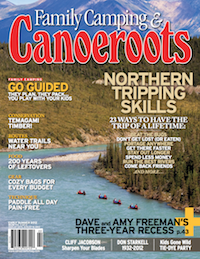It’s simple to sharpen a knife, making it both easier and safer to use. This method works with any non-serrated blade.
SHARPENING TOOLS
You’ll need a medium-grit and a fine-grit whetstone. A coarse grit stone is only necessary if the knife is badly nicked or very dull. The quality of the abrasive is more important than whether the stone is natural or synthetic. Use water to lubricate diamond stones and cutting oil or WD-40 on natural stones. For safety, your stones should be at least six inches long.
PROCEDURE
1. Dip the blade of your knife in boiling water for about 30 seconds to make it easier to sharpen.
2. Begin with the coarse stone. Raise the back of the blade about 15 degrees and cut into the stone.
To sharpen Scandinavian-style blades, do not use a 15-degree angle. Instead, hold the beveled portion of the edge flat against the stone.
3. Hone one edge until a burr appears on the opposite side—you can feel it with a finger. Then hone the other side until a burr appears. Switch to the fine stone and continue sharpen- ing, alternating sides every few strokes until the burrs are gone. Maintain a film of oil to float away steel particles that may otherwise clog the pores of the stone. Clean the stone by wiping off the surface and applying clean oil frequently to keep suspended grit from dulling the sharpened edge.
4. Check for blade sharpness. A knife is considered sharp if it will shave hair from the back of your hand. A less barbaric method is to shine a bright light on the edge. You should see no flat spots or inconsistencies.
Grit clogs the pores of sharpening stones and they become smoother over time. You’ll prolong their life if you occasionally boil them out. Simply submerge your stone in a pot of boiling water with a few drops of detergent added and let it soak for a few minutes.
Butcher’s steels do not sharpen a knife; they merely realign the microscopic teeth of the edge. A steel is handy for touching up a knife—it’s simply a coarse version of a leather strop—but it can’t take the place of a genuine whetstone.
Cliff Jacobson is a wilderness guide, Eagle Scout and the author of Expedition Canoeing.

This article first appeared in the Early Summer 2012 issue of Canoeroots Magazine.




